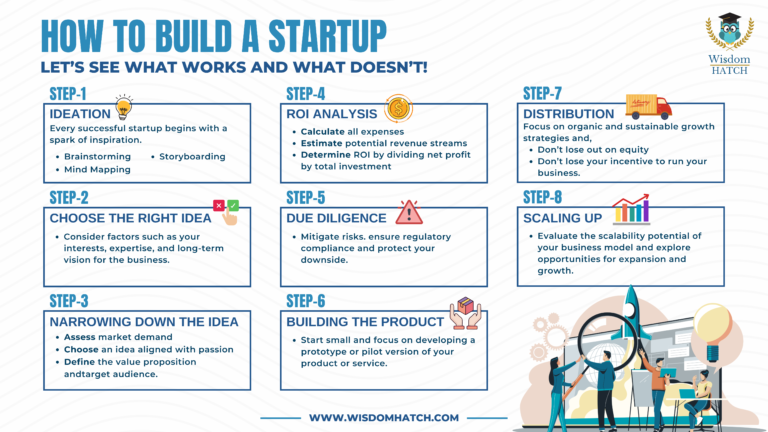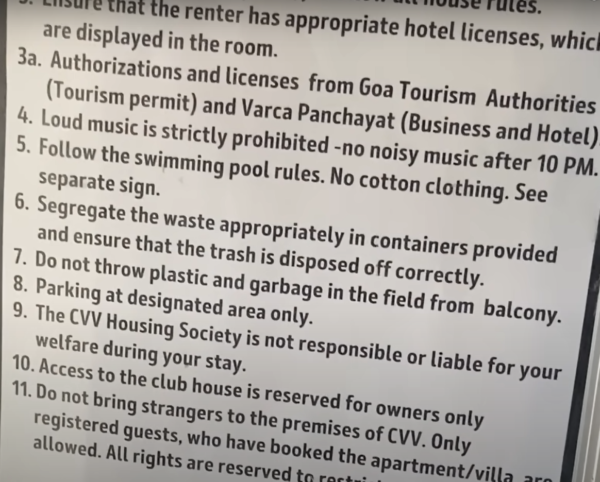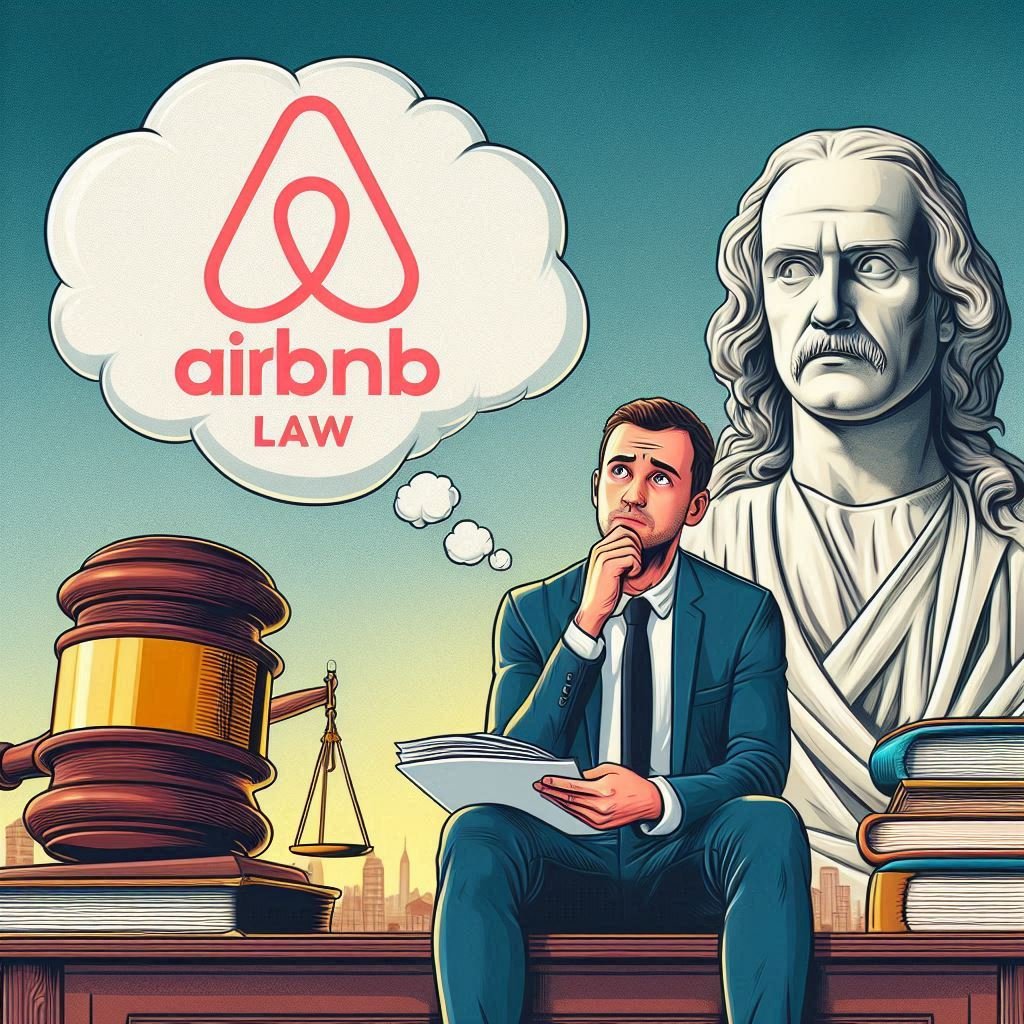How to Build a Startup

Embarking on the journey of building a startup can be both exhilarating and intimidating.
Shows like Shark Tank make the process look easy.
- You show your model
- You raise funds
- And you make a lot of money.
But it’s important to recognize what works and what doesn’t.
How to actually cultivate and nurture an idea.
And that’s what we will cover. Building businesses that focus on:
- Profitability
- Value
- Fundamentals
Drawing from my experience of launching multiple profitable ventures, including an Airbnb rental business in Goa, We have distilled a practical roadmap for aspiring entrepreneurs.
In this blog, we will cover:
- Ideation: Generating and refining business ideas through brainstorming and strategic analysis.
- Choosing the Right Idea: Selecting a business concept aligned with your goals and resources.
- Narrowing Down the Idea: Conducting SWOT analysis to refine your chosen idea further.
- ROI Analysis: Maximizing Returns and Minimizing Risks
- Due Diligence: Understanding the importance of thorough research and compliance to mitigate risks.
- Building the Product: Developing a minimum viable product (MVP) to test your idea in the market.
- Distribution: Devising effective strategies for product distribution and customer acquisition.
- Scaling Up: Exploring opportunities for growth and expansion beyond the initial stages.
Step 1: Ideation - Planting the Seed of Innovation
Every successful startup begins with a spark of inspiration.
The ideation phase is all about generating and refining ideas that have the potential to address a specific need or pain point in the market.
Start by casting a wide net and brainstorming a diverse range of concepts. Whether it’s launching an ice cream shop or starting your own YouTube channel, explore every possibility.
As a start, Jot down 30-40 ideas.
How do you do this:
a. Brainstorming
- Speak with a bunch of people.
- This could be through networking events or college/work groups.
b. Storyboarding
- Envision a customer journey and find gaps that you can fill.
c. Mind Mapping
• This is the process of structuring your processes.
• For eg: If you have a distribution problem for your book, you can break it down into either
- Building your own distribution
- Get outside help by paying extra
- Go to a publishing house
This way you can identify a problem and find a solution for it.
Step 2: Choosing the Right Idea: Aligning Passion with Profitability
With a plethora of ideas at your disposal, the next step is to narrow down your options and select the idea that resonates most with your goals and aspirations.
Consider factors such as your interests, expertise, and long-term vision for the business.
Your business needs to fit with your goals.
For eg: If your goals focus on:
- Offline Physical Business
- That requires less of your time
- The Airbnb space would make sense to you.
You could:
- Buy a house
- And then list it online or
- Give it to a property manager
This is not a push to try out the business,
It’s more focused on showing you how to choose your type of business.
Step 3: Narrowing Down the Idea: From Concept to Concrete Plan
Once you’ve identified a promising idea, it’s time to flesh out your concept and develop a concrete plan of action.
Conduct a SWOT analysis to evaluate the strengths, weaknesses, opportunities, and threats associated with each idea.
Assess the market demand, competition landscape, and feasibility of execution. Ultimately, choose an idea that not only aligns with your passion but also demonstrates strong growth potential and market viability.
Define your value proposition, target audience, and revenue model with precision.
Taking the example of the Airbnb business:
Once you have a property, your options are either to manage it on your own or lease/rent it out.
This will purely depend on your situation.
Step 4: ROI Analysis: Maximizing Returns and Minimizing Risks
A crucial aspect of building a startup is conducting a comprehensive return on investment (ROI) analysis.
This involves assessing the potential returns relative to the initial investment required to launch and operate the business.
To perform an ROI analysis effectively, consider the following steps:
Calculate Expenses:
- Determine the total cost of launching and operating your startup, including upfront investments, ongoing expenses, and overhead costs.
- This may encompass expenses such as operations, marketing, and personnel.
Estimate Returns:
- Project the potential revenue streams and returns generated by your startup over a specified time frame.
- This may include revenue from product sales, subscription fees, advertising, and other sources of income.
- Use realistic assumptions and conservative estimates to account for uncertainties and fluctuations in the market.
Determine ROI:
- Calculate the ROI by dividing the net profit (total returns minus total expenses) by the total investment.
- This will yield a percentage that represents the return on each rupee invested in the startup.
- Aim for an ROI that exceeds your minimum threshold for profitability and justifies the risks associated with the venture.
For eg: In the Airbnb business, you need to calculate:
1. How much expense you will incur:
- Property Cost
- Maintenance Charges
- Renovations etc.
2. How much Return that I can expect:
- Work with the worst-case assumption
- Follow a 4% yield rule as a threshold
- Ie: For a 2Cr villa, I should make at least 8 lakhs a year.
Now, if you are setting up an online business, your focus should be on the time investment.
If you are taking debt to start your business, ensure that your ROI makes sense.
Conducting an ROI analysis enables you to maximize returns and minimize risks, ultimately enhancing the long-term viability and sustainability of your startup.
Step 5: Due Diligence: Mitigating Risks and Ensuring Compliance
Before diving headfirst into your startup venture, it’s essential to conduct due diligence to mitigate risks. ensure regulatory compliance and protect your downside.
Research local laws, regulations, and industry standards relevant to your business niche.
In the case of Airbnb business, conducted extensive research on
- Societal laws,
- Licensing requirements to avoid potential legal pitfalls.

How does this Due Diligence apply to you?
This could be:
- Rules and Regulations in your business space
- GST Registration
Again, assess the competitive landscape and market dynamics to identify potential challenges and opportunities.
By proactively addressing potential risks and compliance issues, you can minimize uncertainties and lay a solid foundation for your startup’s success.
Step 6: Building the Product: From Concept to Creation
With a solid plan in place, it’s time to bring your startup idea to life by building a minimum viable product (MVP).
Start small and focus on developing a prototype or pilot version of your product or service.
This becomes your proof of concept.
For eg: When setting up an Airbnb business,
You can begin by listing a single villa on the platform to test the market demand and gauge customer feedback.
Then expand as per your observations.
During the product development phase, prioritize iterative testing and user feedback to refine your offering. You need to be extensively involved in your business.
Be adaptable and responsive to customer needs, and iterate on your product based on real-world insights.
And to ensure that you stick to the process, pick a space:
- That you are interested in
- Where you can learn & grow your business
- Where you need to invest a very little amount to create your basic product
Once the above steps are done, you will start building your product.
Step 7: Distribution: Reaching Your Target Audience Effectively
Once your MVP is ready, the next step is to devise a distribution strategy to reach your target audience effectively.
How will you market the product?
- You should grow organically and slowly.
- And try to do it profitably.
Identify the most viable channels for marketing and promotion based on your target market demographics and preferences.
Leverage digital marketing tactics such as social media advertising, content marketing, and search engine optimization (SEO) to amplify your reach and visibility.
Focus on organic and sustainable growth strategies that align with your long-term business objectives.
- Don’t lose out on equity unless there is a genuine value add.
- Don’t lose your incentive to run your business.
Cultivate a loyal customer base by delivering exceptional value and personalized experiences.
Start collecting Testimonials.
- Your proof of work is created fully here.
- Show customers why they should trust you.
By focusing on profitability and customer satisfaction, you can establish a strong foundation for long-term success.
Step 8: Scaling Up: From Startup to Scale-Up
There are 2 types of business:
- Zero to One
- One to N
In the first 7 steps, we talked about achieving the Zero to One stage.
As your startup gains traction and momentum, you’ll inevitably reach a pivotal juncture where scaling becomes a viable option. Your One to N stage.
Evaluate the scalability potential of your business model and explore opportunities for expansion and growth.
Taking the example of the Airbnb business, scaling up would involve expanding to additional properties and exploring complementary services such as property management and hospitality.
- Consider strategic partnerships and investment opportunities
- Leverage technology and automation
And that is the entire process.
Conclusion:
Building a startup from scratch is challenging yet rewarding.
It will require you to stay determined and resilient. So the key idea is to pick a business space where you enjoy working and learning.
The example of Airbnb is not to show you what works. It’s to help you decipher your own system.
Your Business needs to make sense to you.
Fix an idea that works for you and be ready to allot a good amount of time to it in the early stages.
Hope this gives you a clear idea!
• Building a startup is exciting but daunting.
• Profitability, value, and fundamentals are key focuses.
• Steps Covered:
1. Ideation:
- Generate ideas through brainstorming, networking, and strategic analysis.
- Consider different methods like storyboarding and mind mapping.
2. Choosing the Right Idea:
- Align the idea with your goals and resources.
- Example: Opting for an Airbnb business aligning with offline presence and time constraints.
3. Narrowing Down the Idea:
- Conduct a SWOT analysis to refine the chosen idea.
4. ROI Analysis:
- Calculate expenses and expected returns to ensure viability.
- Example: In Airbnb, consider property cost and expected rental income.
5. Due Diligence:
- Research laws, regulations, and industry standards.
- Example: Comply with societal laws and licensing requirements.
6. Building the Product:
- Develop a minimum viable product (MVP) to test the market.
- Example: Start with listing a single villa on Airbnb.
7. Distribution:
- Devise a marketing strategy to reach the target audience.
- Focus on organic and sustainable growth.
8. Scaling Up:
- Evaluate scalability potential and explore expansion opportunities.
- Example: Expand to additional properties and explore complementary services.
MUST know BEFORE you become an Airbnb host
Medium Article Preksha Chand edit post MUST know BEFORE you become an Airbnb host Medium Article Preksha Chand edit post...
Make more money from your property: Short-term rental [Airbnb]
Medium Article Preksha Chand edit post Make more money from your property: Short-term rental Medium Article Preksha Chand edit post...
GOA Airbnb Laws: What Hosts Need to Know [2024]
Medium Article Preksha Chand edit post Make more money from your property: Short-term rental Medium Article Preksha Chand edit post...





